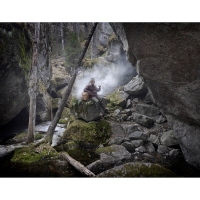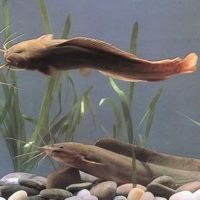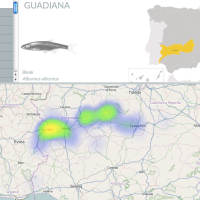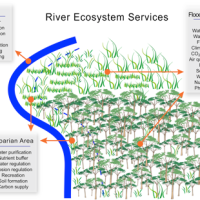Discovering the Dragonflies and Damselflies of Eastern Africa

Spesbona angusta, a damselfy thought to be endemic to the Western Cape, South Africa. First named Metacnemis angusta in 1869, this damselfly was thought extinct between 1920 and 2003 when a small population was rediscovered near Cape Town. Image: Jens Kipping
Dragonflies and damselflies (or Odonata as commonly termed) are some of the most fascinating and beautiful freshwater species in the world. Exhibiting a huge variety of eye-catching colours and with wings flecked with unique patterns, Odonate species live in most parts of the world, laying their eggs in and around bodies of water, and commonly seen flitting about reeds and lily pads on the fringes of lakes, rivers and wetlands.
In this context, a comprehensive new book documentaing the dragonflies and damselflies of tropical East Africa has recently been published, co-written by Klaas-Douwe ‘KD’ Dijkstra from the Naturalis Biodiversity Center in The Netherlands and Viola Clausnitzer at the Senckenberg Museum of Natural History in Germany. The product of fifteen years of fieldwork, research and writing, The Dragonflies and Damselflies of Eastern Africa is the first handbook of its extent and detail on tropical Odonata.
Extending from Sudan and Somalia to Zambia and Mozambique, including the entire eastern half of the Congo Basin, the book covers a third of Africa – about ten million square kilometres, an area comparable to China or the United States – but includes almost two-thirds of the continent’s Odonate species. More than 500 species are illustrated by 1120 original drawings and 360 colour photographs. Identification keys to adult males of all species set a new standard for recognising ‘the birdwatcher’s insects’ in Africa, detailed genus descriptions provide the most comprehensive account of their ecology and taxonomy so far, and all species have been given a vernacular English name for the first time.
 Co-author KD Dijkstra suggests that the new book has important consequences for both freshwater science and conservation, “My hope is that appreciating the visual beauty and ecological sensitivity of dragonflies may increase mankind’s awareness of nature’s diversity and vulnerability. 90% of animal species can fly, which aside from a few birds and bats are all insects. 10% of these insect species inhabit freshwaters: less than 1% of the planet. Nonetheless, science and conservation are dominated by groups that are less mobile (amphibians, fish), more terrestrial (birds, butterflies), or largely neither aquatic nor aerial (mammals, reptiles). As well as being very popular and visible, dragons and damsels are highly mobile in response to shifts in temperature and precipitation (i.e. climate change).
Co-author KD Dijkstra suggests that the new book has important consequences for both freshwater science and conservation, “My hope is that appreciating the visual beauty and ecological sensitivity of dragonflies may increase mankind’s awareness of nature’s diversity and vulnerability. 90% of animal species can fly, which aside from a few birds and bats are all insects. 10% of these insect species inhabit freshwaters: less than 1% of the planet. Nonetheless, science and conservation are dominated by groups that are less mobile (amphibians, fish), more terrestrial (birds, butterflies), or largely neither aquatic nor aerial (mammals, reptiles). As well as being very popular and visible, dragons and damsels are highly mobile in response to shifts in temperature and precipitation (i.e. climate change).
New frontiers in research, protection and appreciation of nature can only be opened if data on emerging flagship groups like dragonflies is expanded and shared. The Eastern African handbook is the first of its extent and detail to appear on tropical Odonata. Yet often the first reaction I get is “this is great, when can we expect West Africa to be done?” Users don’t always realize how much work is needed and how hard this is to fund. Funders for conservation, science or biodiversity infrastructure all want to apply the existing knowledge pool, but few invest in expanding it. This is ironic, firstly because basic knowledge (beginning with the question “what species is that?”) is what interests the public most about nature; and secondly because finding and sharing what is out there should be our first priority when nature is disappearing before our eyes. I believe that taking strides forward in our understanding of natural history will rely more and more on public and private funding. If people are excited to know more about dragonflies, they should realize that ongoing research needs their support!”
Below is a video documenting KD’s fieldwork sampling dragonfly and damselfly populations in Upemba National Park, D.R. Congo.
You can see more photographs from the trip here
Read more about The Dragonflies and Damselflies of Eastern Africa and purchase online here
More information on Spesbona angusta from the IUCN Red List website
















